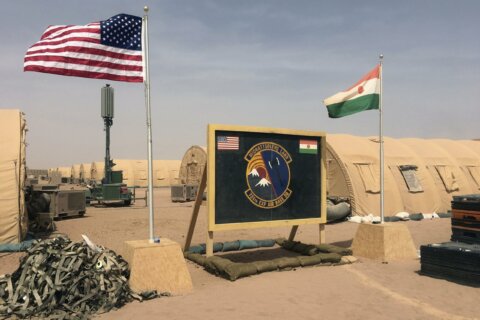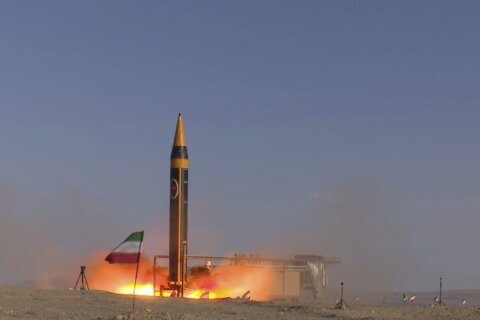WASHINGTON – The MV Cape Ray is expected to leave Portsmouth, Va., in a few days on a mission that no U.S. ship has ever undertaken.
At that point, 35 mariners, about 64 chemical specialists from Edgewood, Md., a security squad and a team from the U.S. European Command will set out for a secret location in the Mediterranean Sea.
There they will neutralize the material the Syrian government had acquired to make chemical weapons.
The United Nations mission to destroy the weapons material was established last October, but U.S. plans to get rid of it started long before that.
“We’ve had a team working for about a year now to try to prepare ourselves for whatever might happen in Syria with regard to having a way to destroy their chemical weapons materials,” said Frank Kendall, undersecretary of defense for acquisition, technology and logistics.
“All things being equal, we would’ve preferred doing this on land. But as we got into exploring options, this ship was the best option,” Kendall told WTOP.
The 37-year-old merchant vessel Cape Ray, which is almost two football fields long, is carrying what’s known as Field Deployable Hydrolysis Units.
“And when the material is transferred onto the ship in appropriate containers, with appropriate safety regulations, we’ll be running them through the Hydrolysis units,” Kendall said.
He dispelled a common misconception that chemical weapons will be on board the Cape Ray.
“We’re not going to have any actual weapons on the ship. What we’re going to have is bulk containers of mostly components of chemical weapons – things that have to be mixed together to make an actual chemical weapons agent,” Kendall said.
Mustard will be one of the materials. When deployed as a gas, it is one of the most feared instruments of war in the history the world. Tens of thousands of people were killed and more than 1 million were wounded by mustard gas during World War I. It was outlawed in 1925, but used in the 1980s during the Iran-Iraq war.
“It’s a terrible weapon, an inhaled weapon that scalds the lungs and your ability to breathe,” said David Kay, a senior fellow at the Potomac Institute for Policy Studies. It also disfigures the skin.
Until the joint U.N. mission was established last year to seize them, the Syrian government maintained a stockpile of numerous chemical agents, including mustard, nerve agents such as sarin, and VX. They also had thousands of armaments that could be used to deliver chemical warfare agents.
A U.S. government assessment last year determined that 1,429 people were killed in an Aug. 21, 2013, chemical weapons attack, including at least 426 children.
The first shipment of chemical weapons from Syria to be destroyed left the country on Tuesday. Sigrid Kaag, special coordinator of the Joint Mission of the Organization for the Prohibition of Chemical Weapons OPCW, says the priority chemical materials were loaded onto a Danish commercial vessel.
In a statement on Tuesday, Kaag said the vessel left the port of Latakia, Syria, for international waters and will remain at sea for the arrival of additional priority chemical materials.
Once the chemical are all assembled, they will be moved to a yet to be named Italian port. At that time the MV Cape Ray is expected to pick up the materials and take to them a heavily secured location in the Central Mediterranean.
Then according to Kendall, the chemicals will be put through the hydrolysis machines, “where they’ll be mixed with water primarily.” The outcome he says, “will be what we call ‘effluent,'” a much safer chemical product.
Kay, a former U.N. weapons inspector, says the historic nature of the entire process should be noted.
“In the midst of a civil war, your trying to take chemicals, move them a considerable distance, for their ultimate destruction in the middle the Mediterranean ocean. It’s never been done before,” Kay said.
It’s expected the operational portion of the mission will take about 90 days, but Kay warns that delays are possible.
Follow @WTOP on Twitter.







